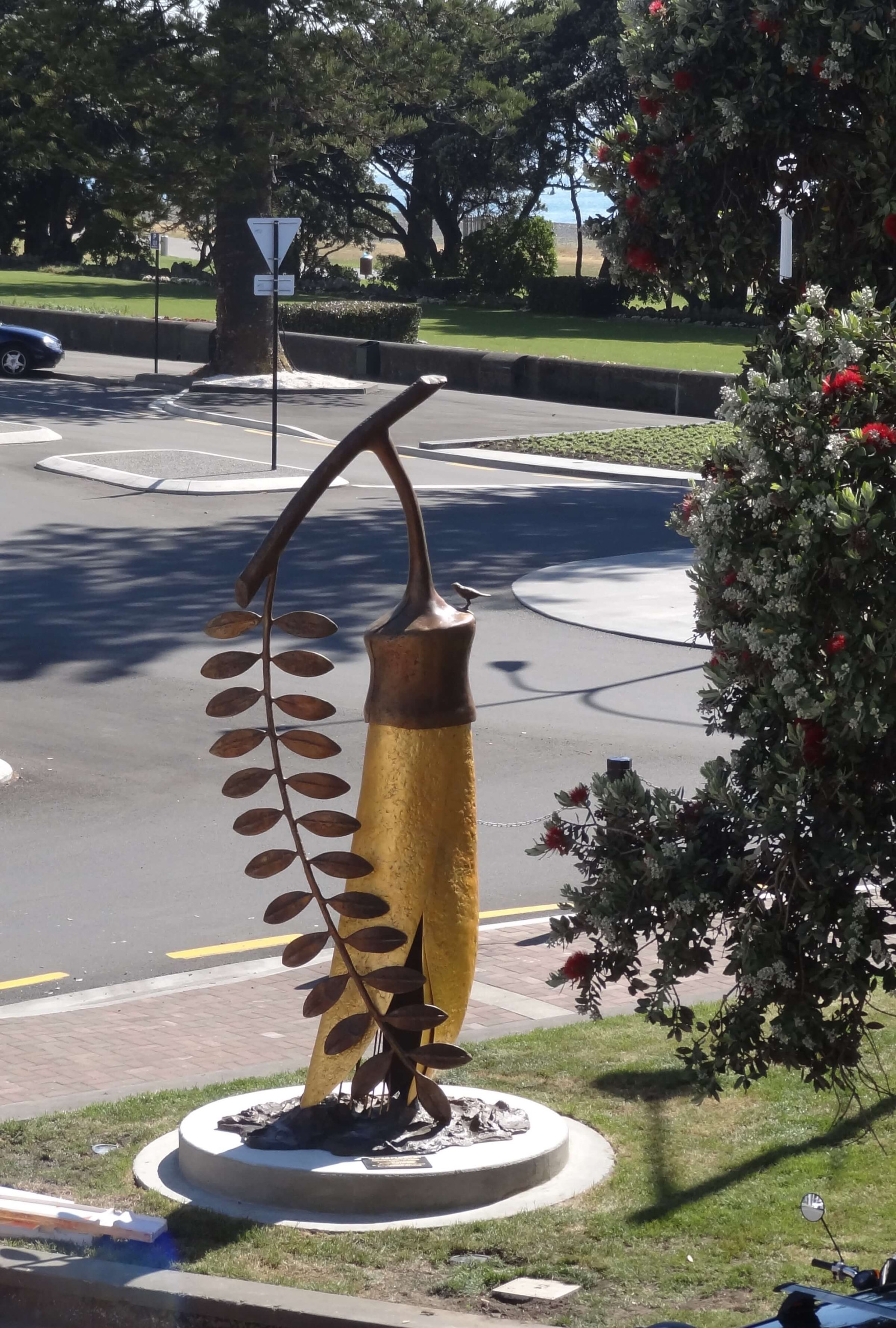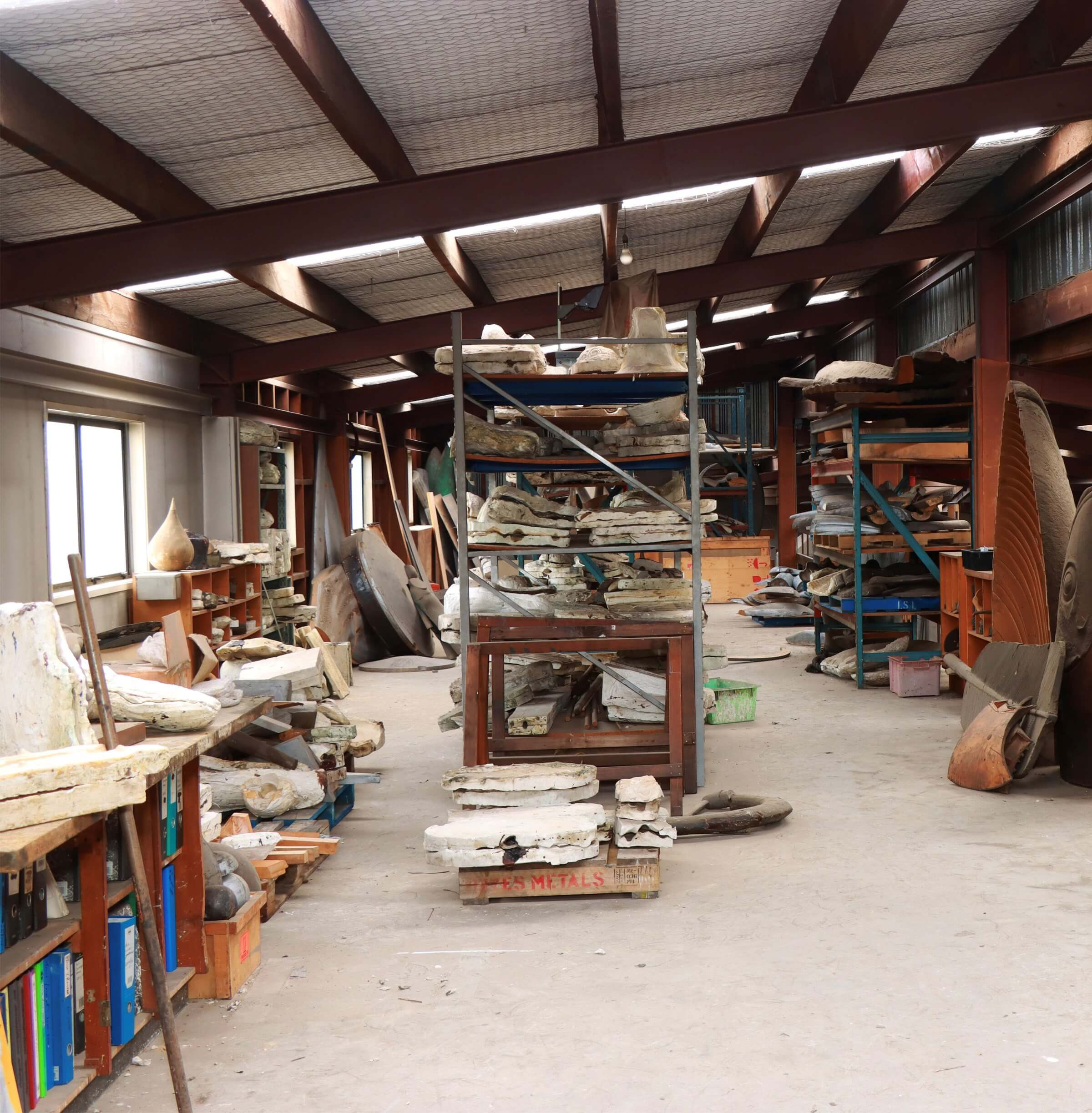Visit Sculptures in Hawke's Bay
Visit Sculptures in Hawke's BayThe Gold of the Kōwhai, 2014
Location: Opposite MTG Hawke’s Bay, corner of Tennyson and Herschell Streets, Napier
The kōwhai as an icon developed in Dibble’s work in an almost storybook progression: from a very simple and small motif, it became bigger, bolder, and more complex. The seed that germinated this abundance was a line from a poem by William Pember Reeves.
Reeves was a New Zealand statesman who spent most of his life abroad in England. His most famous poem, The Passing of the Forest - A Lament for the Children of Tanē (1898), mourned the clearing of the native bush. This poem came to the attention of the Dibble studio as part of the research undertaken for Southern Stand: The New Zealand Memorial. A phrase from this period stayed with Dibble and into his work beyond, being “the gold of the forest” as a description of the kōwhai tree. It is a very visual expression, summing up the impression of a kōwhai in full bloom with its vibrant colour, particularly in a New Zealand native bush setting where there are few coloured flowers. Kōwhai bloom at the beginning of spring so the burst of yellow after winter is startling; bright gold against a backdrop of monochrome green.
The imagery inspired the evolution of the phrase “the gold of the kōwhai”, which became the basis of numerous Dibble works. The kōwhai’s gold was taken literally, and Dibble studio began to apply gold sheet onto the surface of the bronze to make the bright petals. This interplay of different metals, each complimenting the other, had earlier been seen in Dibble’s use of bronze juxtaposed with Corten steel.
The largest Dibble kōwhai was the one made for Napier, sponsored by four families from the area, and placed directly opposite MTG Hawke’s Bay.

The Garden, 2002
Location: outside isite Visitor Information Centre, 1 Te Aute Road, Havelock North
The Garden, taking its name from the biblical garden, is a reference by Dibble to New Zealand as an antipodean paradise.
The artwork features a female torso juxtaposed by a leaf falling; a slow gracious fall, just landing to balance upright. The movement of the leaf suggests the passing of time with the seasons.
The leaf and torso together are placed for more than just narrative. As shapes they aesthetically relate in the soft swells and curves, subtly nodding to each other to create an atmosphere of stillness and tranquility.
From the front view the sculpture’s forms appear monumental with full solid shapes. But when approached from the side the forms are actually semi-relief, with thin delicate edges, and the form lending towards abstraction. Here are contained the classical elements of European notions of sculpture, yet with its Pacific context enacted as in the almost two-dimensional quality of canoe prows or South Pacific sculpture. Contrasted to this is the apple, as from the forbidden garden, modeled completely in the round.
The work was first shown in Wellington in 2002. Dibble retained one of the editions for a time and, before its release, altered the work by gilding the apple.
The Garden was displayed in Palmerston North for a short time, before it was purchased by the Mills Trust and moved to Havelock North.

